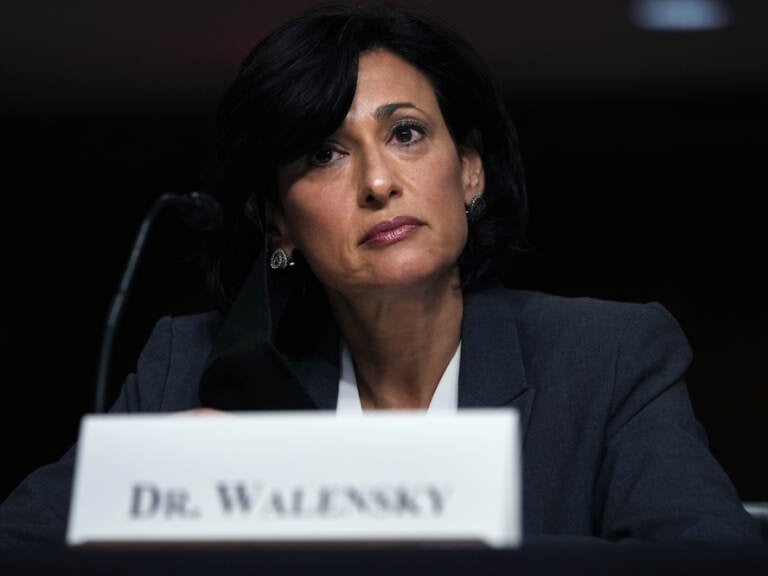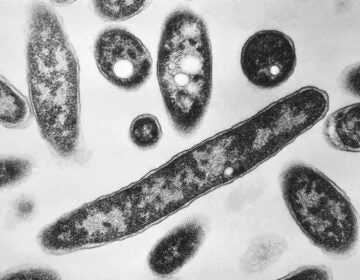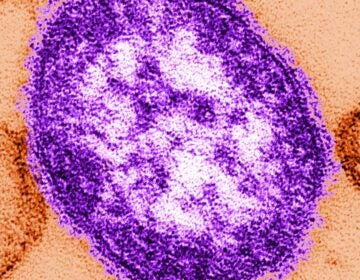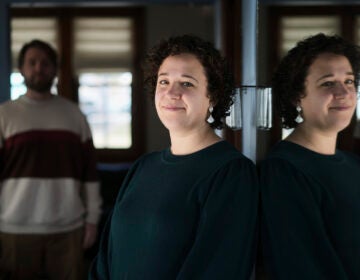CDC says Americans can now go unmasked in many parts of the country

File photo: Dr. Rochelle Walensky, director of the Centers for Disease Control and Prevention, testifies during the Senate Health, Education, Labor and Pensions Committee hearing titled Next Steps: The Road Ahead for the COVID-19 Response, in Dirksen Building on Thursday, November 4, 2021. (Photo By Tom Williams/CQ-Roll Call, Inc via Getty Images)
The Centers for Disease Control and Prevention announced Friday it is relaxing its mask guidance for communities where hospitals aren’t under high strain. Under the new guidance, nearly 70% of the U.S. population lives in areas considered to be low or medium risk and residents there are advised they can go indoors without masks.
The CDC recommends continued mask use in communities where serious cases of COVID-19 are straining the health system.
The move to ease masking guidance, federal officials say, reflects current conditions at this phase of the pandemic, including widespread immunity through vaccination and prior infection as well as better access to testing and treatments.
“We want to give people a break from things like mask-wearing,” said CDC director Rochelle Walensky at a press briefing Friday, adding that new risk guidelines that the agency is implementing will help people know when to reach for masks again if conditions warrant.
Health officials emphasized that people should still wear masks if they wish or if they are personally at high risk. And regardless of local conditions, they should mask if they have COVID-19 symptoms, a positive COVID-19 test or who have been exposed to someone with COVID-19.
As part of the change, the CDC is dropping its recommendation for universal school masking and instead will recommend masking only in communities at a high level of risk.
The new guidelines for assessing community risk, released today by the CDC, weigh hospitalizations for COVID-19 and the proportion of beds occupied by COVID-19 patients in local hospitals more heavily than rates of new infections alone.
“Moving forward, our approach will advise enhanced prevention efforts in communities with a high volume of severe illness and will also focus on protecting our healthcare systems from being overwhelmed,” Walensky tweeted Thursday night.
The agency has changed course on masking several times during the course of the pandemic. In May last year, it announced guidance that fully vaccinated people could safely stop wearing masks indoors, only to reverse that advice two months later as the delta variant surged and breakthrough cases rose. At that point, CDC said masking indoors was advised in parts of the country with “substantial or high” spread of the virus, which it defined as 50-100 or more new weekly cases per 100,000 people.
Though cases are rapidly declining in the U.S., currently around 95% of counties are still seeing those “substantial or high” levels of spread – according to the CDC’s older risk metrics, based primarily on new cases.
Under the CDC’s new risk metrics, an area is deemed “high” risk if it has concerning levels of COVID hospital admissions and hospital capacity taken up by COVID patients.
Nearly half of U.S. counties are in this new high-risk category, where mask wearing is recommended, but these counties account for only 31% of the population.
Many public health experts say the shift in guidance makes sense – in the context of declining case rates and the widespread availability of COVID-19 vaccines.
“I think we’re moving to a pragmatic strategy, one that recognizes that those who want to protect themselves have every tool available,” says Dr. Ali Khan, a former CDC official and now a dean at the University of Nebraska: “There are free vaccines, free masks, free tests and free antivirals.” Khan says it’s now up to communities and individuals to determine what actions to take to protect themselves and those around them.
It makes sense for the CDC to put in place shared metrics for understanding risk, says Khan, “and then locally, [for communities] to make decisions to relax mask guidelines based on what the local conditions are: How well people are vaccinated, how many people are going to hospitals, what sort of absenteeism levels you have [among hospital staff].”
Since people who are fully vaccinated and boosted are generally well-protected from severe disease, Khan says masking requirements in highly vaccinated communities are geared towards protecting the unvaccinated and reducing the impact they have on health care capacity.
9(MDAzMzI1ODY3MDEyMzkzOTE3NjIxNDg3MQ001))




